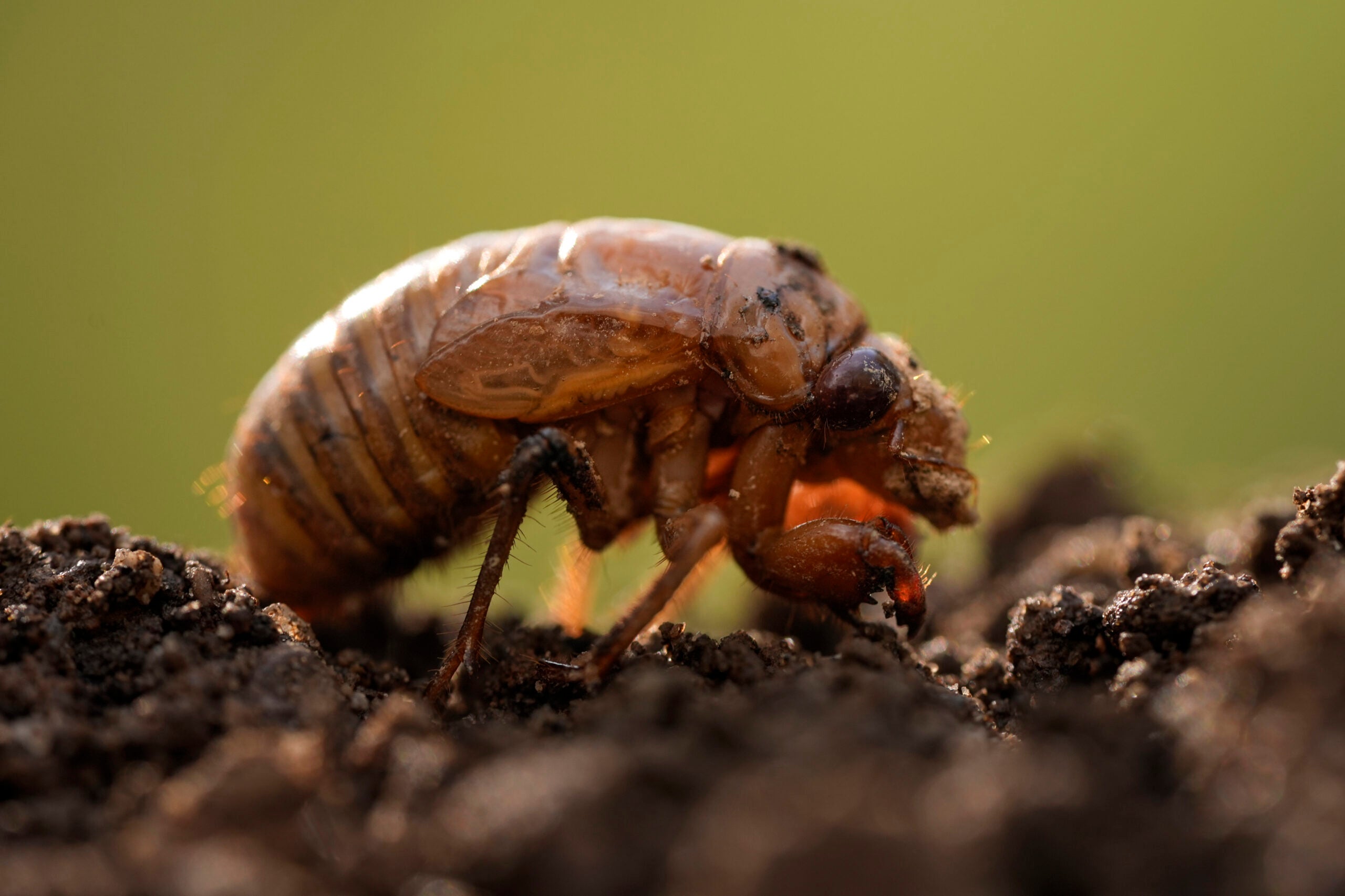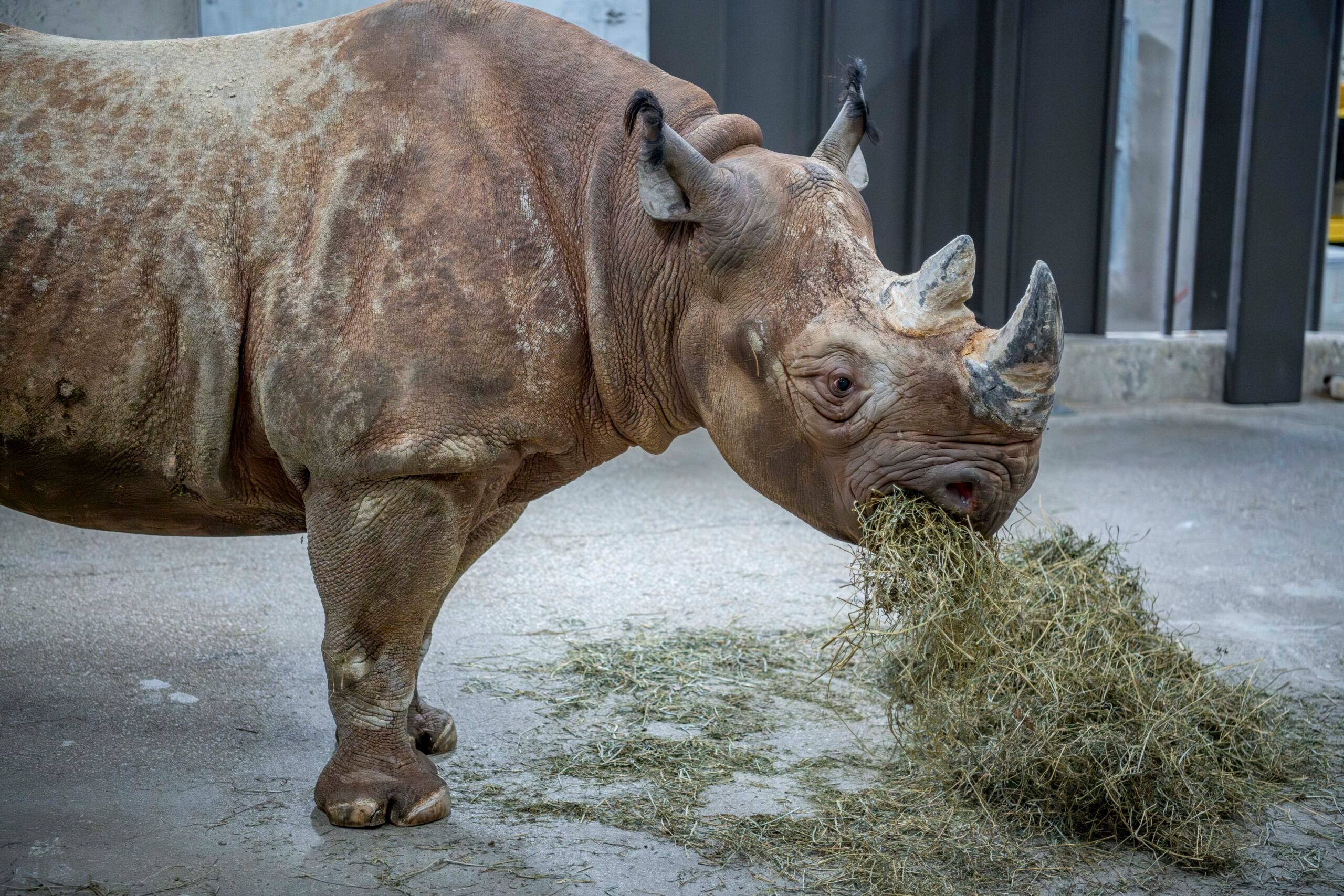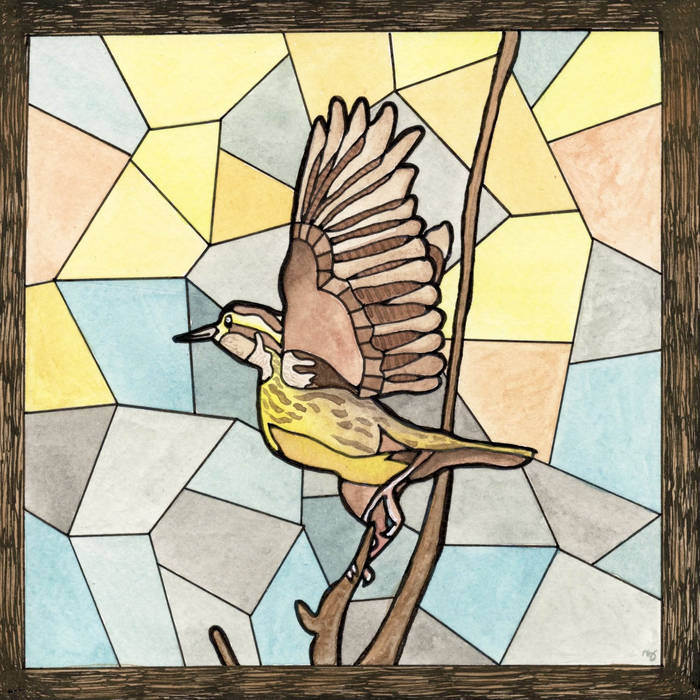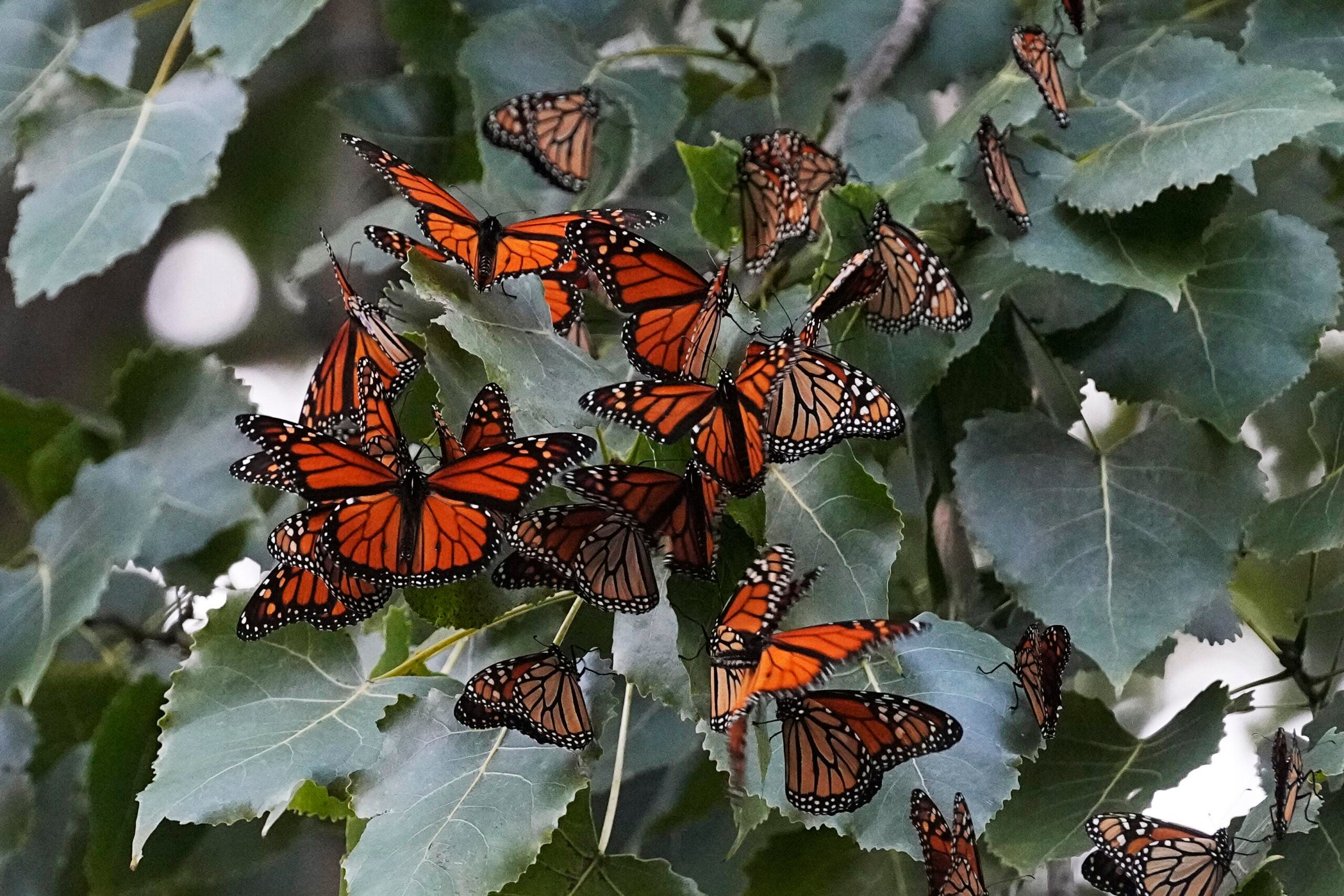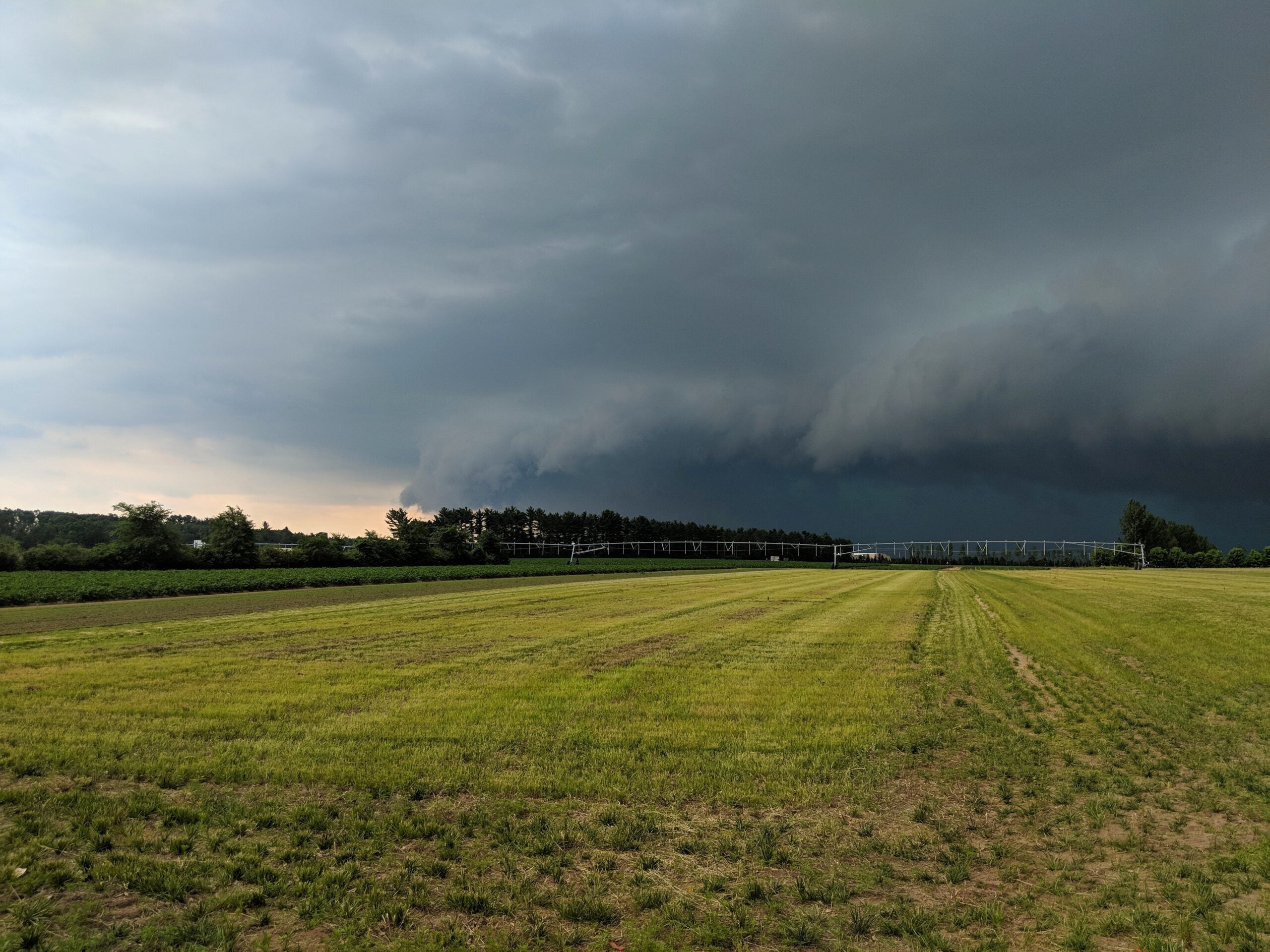Wisconsin and other states around the country are bracing to host trillions of visitors this summer in an event that’s even rarer than the solar eclipse that happened around much of North America on April 8.
Two broods of cicadas — one that lives on a 13-year cycle and the other on a 17-year cycle — will emerge from the ground this year to breed.
So many cicadas will make for a noisy summer, said Mike Hillstrom, a forest entomologist with the state Department of Natural Resources. He recently joined WPR’s “The Morning Show,” where he said the two broods come out at the same time once every 221 years.
News with a little more humanity
WPR’s “Wisconsin Today” newsletter keeps you connected to the state you love without feeling overwhelmed. No paywall. No agenda. No corporate filter.
“The other interesting part of this whole cicada thing is that there’s actually three species of the 17-year cicadas and four species of the 13-year cicadas that all join in these different broods,” he said. “So, you have multiple species on different time cycles, all emerging, synchronized. So fascinating from a scientific perspective.”
On “The Morning Show,” Hillstrom explained why cicadas appear more in certain parts of Wisconsin and how long the state’s residents and visitors can expect cicadas to be around this summer.
The following has been edited for brevity and clarity.
Kate Archer Kent: Why do broods vary in length? Thirteen years, 17 years. There’s a 12-year cycle, I think. Why the variations?
Mike Hillstrom: That’s still up for debate as to exactly how those distinct timelines evolved. But the main purpose of having that long of a lifecycle is predator avoidance. So, if you emerge in the trillions, there’s really no chance that any predator is going to be able to eat that many insects. It’s a great predator avoidance strategy.
KAK: Why is northern Wisconsin less affected?
MH: It probably has to do with climate. The 17-year broods are the farther north broods, whereas the 13-year broods tend to be farther south. It probably just has to do with temperature. Periodical cicadas emerge when the soil temperature at about 8-inches deep gets to about 64 to 65 degrees.
How exactly they know that it has been 13 years or 17 years since the last one emerged is still up for debate.
KAK: You’re not getting much out of your cicada interviews these days?
MH: They’re very loud. They’re very talkative, right? But they don’t seem to want to answer a question directly.
KAK: Those males, what is up with the buzz? How do they make that sound?
MH: They have this really cool structure called the tymbal organ, and their bodies are kind of hollow at the back as well. It’s this resonating chamber so they can make this loud sound.
Any individual cicadas are not necessarily that loud. But when you get hundreds, thousands, tens of thousands, millions of these things all in the same area, and they all start producing that sound at the same time — that’s where you get this really intense sound. If you stand under a big tree that has thousands of cicadas in it, you’re probably going to want some hearing protection. It’s going to be really loud.
KAK: How do the females respond?
MH: The females don’t have the same kind of sound organs, but they can flick their wings in a way that makes a response noise so that the males know where they are.
KAK: What makes a good cicada habitat?
MH: Cicadas need a deciduous forest, and they actually need a pretty good chunk of forest. If you look at the map of where cicadas are in Wisconsin, it’s across the southern two or three tiers of counties in the state. But you don’t really see any over in the Milwaukee area that’s more developed.
They need a good chunk of deciduous forest. That’s because during that 13 and that 17 years, those nymphs are underground feeding on root tissue. They need a lot of space, obviously, for millions and millions of cicadas to feed on root tissue. Now, the cool thing is this is not something that’s damaging the trees. So, even though they’re feeding on that root tissue, it’s not something that’s harming the tree.
KAK: How long will the cicadas stay?
MH: Any individual cicada will only live a couple of weeks to three weeks, but they come out over a period of about two or three weeks. So, we’ll have them around for roughly four to six weeks. It’ll probably start, based on historical records, maybe the last week of May and there will be a few hanging on maybe toward the end of June.
KAK: I feel like in the dog days of summer, I hear cicadas. I just feel like I’ve heard them later on in the summer months.
MH: You’ve got that right. There are what we call annual cicadas or “dog-day cicadas” that are out every year. They have a multi-year lifecycle, as well. But some of those are out every year. And so those cicadas you hear in August and September, those are a different set of species of cicadas.
Those annual cicadas, they’re pretty big. They have green wings. These periodical cicadas that come out earlier are smaller. They have orangey red wings, and they have these bright red eyes…. All over Wisconsin, we see those annual cicadas every year.
Wisconsin Public Radio, © Copyright 2026, Board of Regents of the University of Wisconsin System and Wisconsin Educational Communications Board.
